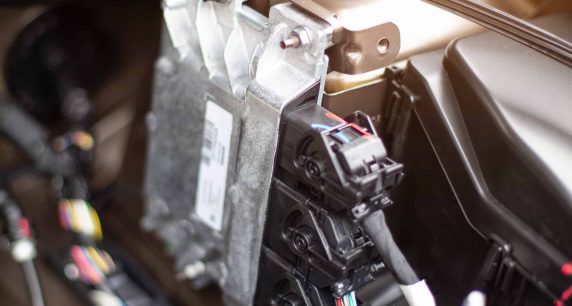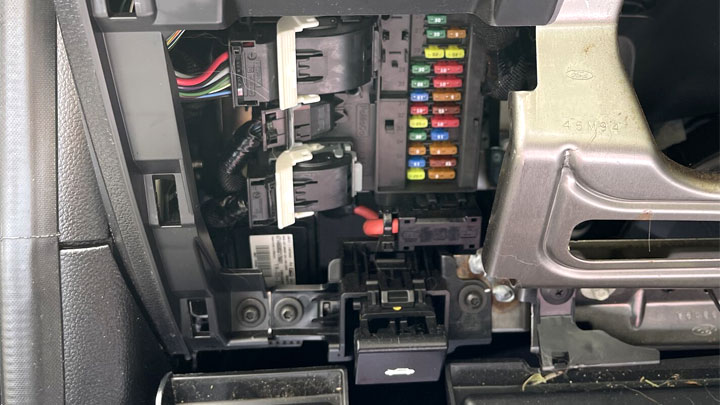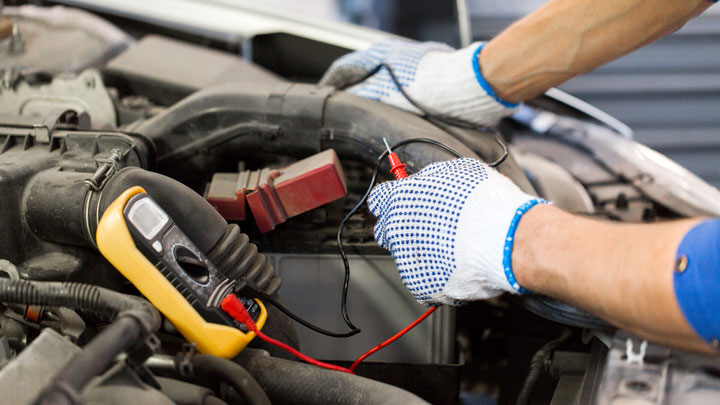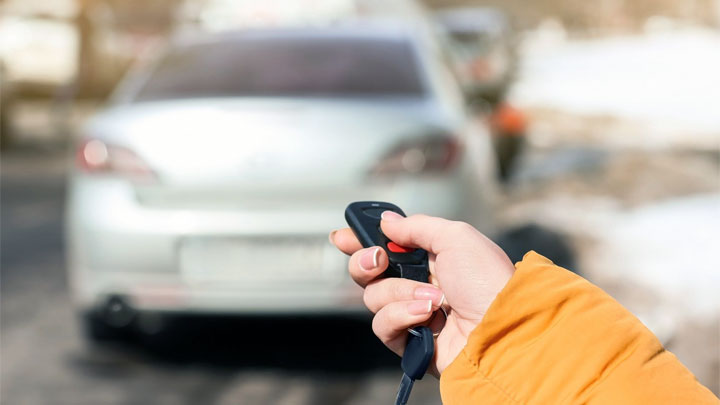5 Common Symptoms of a Failing Body Control Module (BCM)

Today’s vehicles rely upon a complex communication network to facilitate proper operation. This network features an array of terminals, wires, and sensors, all of which feedback to varying electronic computer modules. In the vast majority of cases, each of a vehicle’s vital systems features a controlling computer module.
One such module, which is found on virtually all of today’s vehicles, is the BCM, or body control module. This module is tasked with supporting a number of safety and comfort related functions, which provide immense value to a vehicle’s driver, and additional occupants.
However, though rare, a vehicle’s body control module can exhibit severe operational issues, up to and including complete failure. When this occurs, several troubling symptoms can present themselves, of which many can be quite troubling to contend with.
WHERE IS A BODY CONTROL MODULE LOCATED?

In the vast majority of vehicles, the body control module can be found beneath the dashboard. This tends to be a fairly standardized location, with most modules of this type being located within close proximity to this area.
However, the exact side on which the BCM is located (driver/passenger), varies from one model of vehicle to the next.
In certain instances, accessing the BCM can require partial disassembly of the dashboard and surrounding trim itself. Luckily, doing so can often be done with minimal hardship, as many dash-related components are assembled with little more than push-style clips.
SYMPTOMS OF A FAULTY BODY CONTROL MODULE
There are a number of signs associated with body control module failure. However, some of these symptoms tend to be far more prevalent than others, though it is important to familiarize yourself with each in the event that you are faced with a fault of this type in the future.
The following are several of the most common symptoms associated with body control module failure.
- Repeated Battery Drain

One of the most common symptoms associated with body control module failure is repeated, excessive battery drainage, also known as a parasitic draw.While a certain amount of parasitic draw is permissible, excessive draw allowed by a BCM fault can drain a battery in hours. This draw occurs when a BCM continues to supply power to a particular accessory at incorrect times. - Erratic Electrical Function
 A faulty body control module can also cause intermittent operation of various electrical functions, such as a vehicle’s horn, lights, and wipers.Wildly sweeping instrument cluster dials are also a tell-tale sign of body control module failure, as is irregular door lock and radio operation. The chance of such issues being BCM-related increases when more than one of these symptoms are present at any given time.
A faulty body control module can also cause intermittent operation of various electrical functions, such as a vehicle’s horn, lights, and wipers.Wildly sweeping instrument cluster dials are also a tell-tale sign of body control module failure, as is irregular door lock and radio operation. The chance of such issues being BCM-related increases when more than one of these symptoms are present at any given time. - Security System Problems
 In almost every instance, a vehicle’s security system is operated by the body control module. Therefore, it is easy to assume that consistent, yet puzzling issues associated with a vehicle’s security system, are the by-product of a failing or faulty body control module.This can also include problems with a vehicle’s keyless-entry or passive-entry functions.
In almost every instance, a vehicle’s security system is operated by the body control module. Therefore, it is easy to assume that consistent, yet puzzling issues associated with a vehicle’s security system, are the by-product of a failing or faulty body control module.This can also include problems with a vehicle’s keyless-entry or passive-entry functions. - Dash Warning Lights

A faulty body control module can wreak havoc upon a vehicle’s instrument cluster. An otherwise unremarkable dash display can suddenly be illuminated to the point of resembling a Christmas tree.
This occurs when a BCM is unable to communicate with one more of a vehicle’s additional control modules, such as the transmission control module, powertrain control module, or airbag control module.
- Failure to Start
 A non-functioning or faulty body control module can also prevent a vehicle from starting at all, in certain cases.
A non-functioning or faulty body control module can also prevent a vehicle from starting at all, in certain cases.
Though somewhat rare, a bad BCM can fail to identify the key’s transponder chip, or can simply fail to deliver a “start” signal from a vehicle’s ignition switch, thereby preventing starter engagement.
A lack of communication by the BCM with other corresponding control modules can also lead to starting difficulties.
CAN YOU DRIVE WITH A BAD BCM?
Though it is theoretically possible to drive a vehicle with a faulty body control module in most cases, doing so is ill-advised. This stems from the unpredictable nature of a computer module that is in the process of failing.
One simply cannot predict which of a faulty computer’s functions will operate as intended, on any given basis. The problem with this is that it is impossible to determine whether or not a safety sensitive issue will arise as the result of BCM failure.
Even if no such issue has occurred in the past, there is no guarantee that a faulty BCM will operate a vehicle’s lights when expected to do so. This poses a reasonable risk to a vehicle’s occupants.
CAN A BCM BE RESET?
In certain instances, a vehicle’s BCM can be reset to restore full function. This, of course, hinges upon a module’s internal circuitry being in proper working order, as no reset will remedy compromised internal electrical circuits.
If a “glitch” of sorts has led to your vehicle’s BCM issues, a reset might be the exact repair that is needed. The procedure for completing a body control module reset generally differs from one make and model of vehicle to the next.
Ford, Dodge, and Chevy/GMC all have their own procedure for completing such procedures, though most involve cutting power to a vehicle’s BCM for a specified period of time.
In many cases, this is done by simply disconnecting a vehicle’s battery, while other vehicles require a specialized fuse to be removed.
In any event, you should always consult factory specific service literature for your specific vehicle before attempting to reset your car, truck, or SUV’s body control module. Failing to do so can lead to irreversible unit damage.


 A faulty body control module can also cause intermittent operation of various electrical functions, such as a vehicle’s horn, lights, and wipers.Wildly sweeping instrument cluster dials are also a tell-tale sign of body control module failure, as is irregular door lock and radio operation. The chance of such issues being BCM-related increases when more than one of these symptoms are present at any given time.
A faulty body control module can also cause intermittent operation of various electrical functions, such as a vehicle’s horn, lights, and wipers.Wildly sweeping instrument cluster dials are also a tell-tale sign of body control module failure, as is irregular door lock and radio operation. The chance of such issues being BCM-related increases when more than one of these symptoms are present at any given time. In almost every instance, a vehicle’s security system is operated by the body control module. Therefore, it is easy to assume that consistent, yet puzzling issues associated with a vehicle’s security system, are the by-product of a failing or faulty body control module.This can also include problems with a vehicle’s keyless-entry or passive-entry functions.
In almost every instance, a vehicle’s security system is operated by the body control module. Therefore, it is easy to assume that consistent, yet puzzling issues associated with a vehicle’s security system, are the by-product of a failing or faulty body control module.This can also include problems with a vehicle’s keyless-entry or passive-entry functions.
 A non-functioning or faulty body control module can also prevent a vehicle from starting at all, in certain cases.
A non-functioning or faulty body control module can also prevent a vehicle from starting at all, in certain cases.


